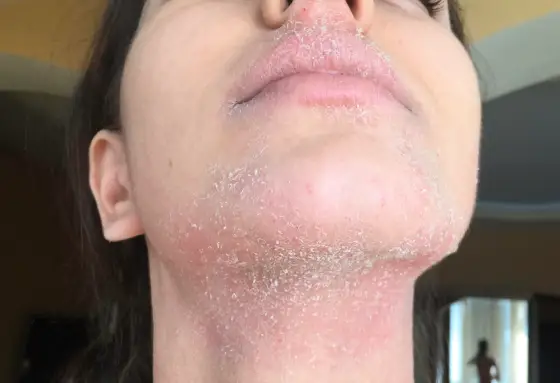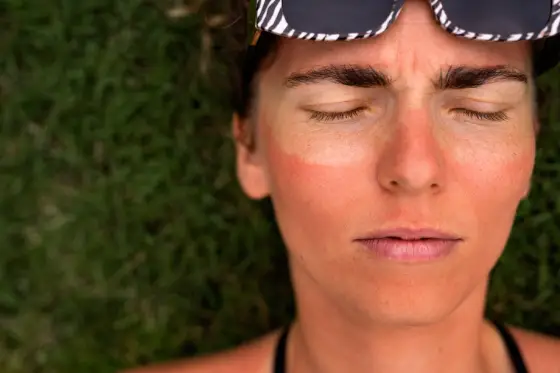Causes and Prevention of Dry and Rough Skin Patches

Dry, rough skin patches are a usual skin issue that many people experience. This particular skin condition is visible in any individual, irrespective of age and gender. Dry skin patches, which are found on the arms, feet, back, and other parts of the body, can affect our self-confidence. While some experience this skin condition during the low temperatures of winter, some may face this issue at other times as well.
So, proper skin exfoliation or the building of a smart skincare routine is essential. Before we jump into the possible prevention of dry skin patches, we will explore the causes of the same. Read on!
What Causes Dry Rough Patches?
As mentioned above, found on different parts of the body, dry skin patches can have several influencing factors. It could range from seasonal changes to genetics.
So, in this section of the blog, we are going to break down some of the most common and uncommon causes of dry skin patches.
1. Seasonal Changes
Patches on the skin are visible in various parts of the body during the low temperatures of winter. The primary reason responsible for this skin issue is the loss of moisture due to the dominating dryness in the weather. So, if you are someone suffering from dry skin patches during the cold days of the year, you can look for proper skin hydration during this time.
2. Age
If you previously had normal and hydrating skin, but it has now become a bit dry, then age might be a reason. Actually, young individuals are often able to remove the inactive skin cells, further regenerating the new ones. However, the new cell generation process is low in older adults (specifically those 40 and above). As a consequence, older adults often experience the buildup of inactive skin cells, which can lead to dry and patchy skin.
3. Allergens
Allergens are often one of the most influential factors in dry and irritated skin. Apart from the face, exposure to any kind of allergen can affect the overall body. It can also be responsible for skin issues like the development of various patches on the rough skin. For example, if you are allergic to a certain metal, the use of the same can have an adverse impact on the skin.
4. Lack of Proper Nutrition
The consumption of the wrong food can often act as an influencing factor for dry and rough skin. For example, if your food sources lack calcium, vitamin D, and E, they can form light patches on the skin.
5. Fungal Infection
One of the most observed diseases caused by skin dryness is athlete’s foot. Influenced by fungal infection, this particular skin condition can affect areas between the toes. This specific skin issue can also lead to skin itching, burning, and many other symptoms.
6. Genetics
Genetics has been proven to be one of the influencing factors for dry skin patches. For example, if one of your parents or a close relative has a dry skin condition, you may tend to develop the same issue.
7. Skincare
Improper skincare practices can cause multiple skin conditions, and one of them is dry skin patches. For example, if you over-wash your skin or use hot water for bathing, it might lead to the loss of moisture. Similarly, the use of harsh cleansers can make the skin look dry and rough, leading to the development of rough patches.
Prevention Tips for Dry, Rough Skin Patches
As mentioned above, several reasons are responsible for the formation of dry skin patches. Nevertheless, you can follow some preventive methods to eliminate this skin issue. For example, you should focus on using skincare products containing salicylic acid, lactic acid, and many other ingredients to get the best results. So, here are some effective methods to solve the rough and dry skin patches.
1. Moisturize Your Skin
Most of the time, we often experience dry and rough skin patches on the skin due to extreme moisture loss. So, it is advisable to use a hydrating skin moisturizer that can be applied to dry skin. Furthermore, it is recommended that you use this product on damp skin to retain skin moisture.
2. Focus on the Body Care
As mentioned above, dry and rough patches can appear on any part of the body, such as the legs, back, hands, face, and many others. So, focusing on body care is essential to maintain hydrated skin. Therefore, it is advisable to select the right skincare products required for your skin. Further, you can opt for body cleansers containing skin exfoliators, such as salicylic acid. Cleansers that consist of ceramides are also helpful for rough and dry skin patches.
3. Apply Products That Act As Gentle Exfoliators
Dry skin patches often lead to the buildup of inactive skin cells, which further causes multiple skin conditions. So, if you want to eliminate the dry skin patches, it is advisable to apply some gentle creams. It has been observed that skincare products containing chemical exfoliants, like lactic acid and salicylic acid, can help to assist in natural exfoliation. It can further eliminate inactive skin cells and help in the regeneration of new ones.
Dry and rough skin patches are common in several people. They can cause multiple skin concerns, like snake skin, psoriasis, and many more. Although one of the most crucial factors behind the formation of dry skin patches is weather change, there are other reasons as well. So, we have provided some common and uncommon reasons and prevention methods for rough skin patches. We hope that these will help you to get the glowing skin you have desired for so long.




